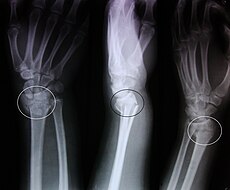Containers containing anticoagulants
· Green - Contains Sodium Heparin or Lithium Heparin used for plasma determinations in clinical chemistry (e.g. urea and electrolyte determination).
· Light Green or Green/Gray 'Tiger': For plasma determinations.
· Purple or lavender - contains EDTA (the potassium salt, or K2EDTA). This is a strong anticoagulant and these tubes are usually used for full blood counts (CBC) and blood films. Lavender top tubes are generally used when whole blood is needed for analysis. Can also be used for some blood bank procedures such as blood type and screen, but other blood bank procedures, such as crossmatches must be in a pink tube in most facilities.
· Grey - These tubes contain fluoride and oxalate. Fluoride prevents enzymes in the blood from working, so a substrate such as glucose will not be gradually used up during storage. Oxalate is an anticoagulant.
· Light blue - Contain a measured amount of citrate. Citrate is a reversible anticoagulant, and these tubes are used for coagulation assays. Because the liquid citrate dilutes the blood, it is important the tube is full so the dilution is properly accounted for.
· Dark Blue - Contains sodium heparin, an anticoagulant. Also can contain EDTA as an additive or have no additive. These tubes are used for trace metal analysis.
· Pink - Similar to purple tubes (both contain EDTA) these are used for blood banking.
· Black - used for ESR also knows as Erythrocyte Sedimentation Rate or "sed rate." goes to hematology department.
ภาชนะบรรจุที่มี anticoagulants
•สีเขียว -- ประกอบด้วยโซเดียมหรือเฮปารินเฮปารินลิเธียมที่ใช้สำหรับการวัดพลาสม่าในวิชาเคมีคลินิก (เช่นยูเรียและการกำหนดอิ)
•สีเขียวอ่อนหรือสีเขียว / สีเทา'ไทเกอร์': สำหรับการหาความพลาสม่า
•ม่วงหรือดอกลาเวนเดอร์ -- มี EDTA (เกลือโพแทสเซียมหรือ K2EDTA) นี้เป็นสารกันเลือดแข็งที่แข็งแกร่งและท่อเหล่านี้มักจะใช้สำหรับการนับจำนวนเลือดเต็มรูปแบบ (CBC) และฟิล์มเลือด ท่อด้านบนลาเวนเดอร์โดยทั่วไปจะใช้เมื่อเลือดเป็นสิ่งจำเป็นสำหรับการวิเคราะห์ นอกจากนี้ยังสามารถใช้สำหรับการบางขั้นตอนการธนาคารเลือดเช่นชนิดของเลือดและหน้าจอ แต่วิธีการที่ธนาคารเลือดอื่น ๆ เช่น crossmatches จะต้องอยู่ในท่อสีชมพูในสิ่งอำนวยความสะดวกมากที่สุด
•สีเทา -- หลอดเหล่านี้มีฟลูออไรและออกซาเลต ลูออไรด์ป้องกันไม่ให้เอนไซม์ในเลือดจากการทำงานเพื่อให้พื้นผิวเช่นน้ำตาลกลูโคสที่จะไม่ถูกใช้ค่อยๆขึ้นระหว่างการเก็บรักษา ออกซาเลตเป็นสารกันเลือดแข็ง
•ฟ้า -- มีจำนวนเงินที่วัดของ citrate citrate เป็น anticoagulant ย้อนกลับและท่อเหล่านี้จะใช้สำหรับการสอบตรวจการแข็งตัว เนื่องจากซิเตรทเจือจางของเหลวในเลือดเป็นสิ่งสำคัญที่หลอดเป็นอย่างเต็มรูปแบบเพื่อการลดสัดส่วนที่จะคิดอย่างถูกต้องสำหรับ
• Dark Blue -- ประกอบด้วยโซเดียมเฮ, anticoagulant ยังสามารถมี EDTA เป็นสารเติมแต่งหรือมีสารที่ไม่มี หลอดเหล่านี้จะใช้สำหรับการวิเคราะห์โลหะติดตาม
•ชมพู -- คล้ายกับหลอดสีม่วง (ทั้งสองมี EDTA) เหล่านี้จะใช้สำหรับการธนาคารเลือด
•สีดำ -- ใช้สำหรับการ ESR ยังรู้อัตราการตกตะกอนของเม็ดเลือดแดงเป็นหรือ"อัตรา sed." ไปที่แผนกโลหิตวิทยา
•สีเขียว -- ประกอบด้วยโซเดียมหรือเฮปารินเฮปารินลิเธียมที่ใช้สำหรับการวัดพลาสม่าในวิชาเคมีคลินิก (เช่นยูเรียและการกำหนดอิ)
•สีเขียวอ่อนหรือสีเขียว / สีเทา'ไทเกอร์': สำหรับการหาความพลาสม่า
•ม่วงหรือดอกลาเวนเดอร์ -- มี EDTA (เกลือโพแทสเซียมหรือ K2EDTA) นี้เป็นสารกันเลือดแข็งที่แข็งแกร่งและท่อเหล่านี้มักจะใช้สำหรับการนับจำนวนเลือดเต็มรูปแบบ (CBC) และฟิล์มเลือด ท่อด้านบนลาเวนเดอร์โดยทั่วไปจะใช้เมื่อเลือดเป็นสิ่งจำเป็นสำหรับการวิเคราะห์ นอกจากนี้ยังสามารถใช้สำหรับการบางขั้นตอนการธนาคารเลือดเช่นชนิดของเลือดและหน้าจอ แต่วิธีการที่ธนาคารเลือดอื่น ๆ เช่น crossmatches จะต้องอยู่ในท่อสีชมพูในสิ่งอำนวยความสะดวกมากที่สุด
•สีเทา -- หลอดเหล่านี้มีฟลูออไรและออกซาเลต ลูออไรด์ป้องกันไม่ให้เอนไซม์ในเลือดจากการทำงานเพื่อให้พื้นผิวเช่นน้ำตาลกลูโคสที่จะไม่ถูกใช้ค่อยๆขึ้นระหว่างการเก็บรักษา ออกซาเลตเป็นสารกันเลือดแข็ง
•ฟ้า -- มีจำนวนเงินที่วัดของ citrate citrate เป็น anticoagulant ย้อนกลับและท่อเหล่านี้จะใช้สำหรับการสอบตรวจการแข็งตัว เนื่องจากซิเตรทเจือจางของเหลวในเลือดเป็นสิ่งสำคัญที่หลอดเป็นอย่างเต็มรูปแบบเพื่อการลดสัดส่วนที่จะคิดอย่างถูกต้องสำหรับ
• Dark Blue -- ประกอบด้วยโซเดียมเฮ, anticoagulant ยังสามารถมี EDTA เป็นสารเติมแต่งหรือมีสารที่ไม่มี หลอดเหล่านี้จะใช้สำหรับการวิเคราะห์โลหะติดตาม
•ชมพู -- คล้ายกับหลอดสีม่วง (ทั้งสองมี EDTA) เหล่านี้จะใช้สำหรับการธนาคารเลือด
•สีดำ -- ใช้สำหรับการ ESR ยังรู้อัตราการตกตะกอนของเม็ดเลือดแดงเป็นหรือ"อัตรา sed." ไปที่แผนกโลหิตวิทยา



